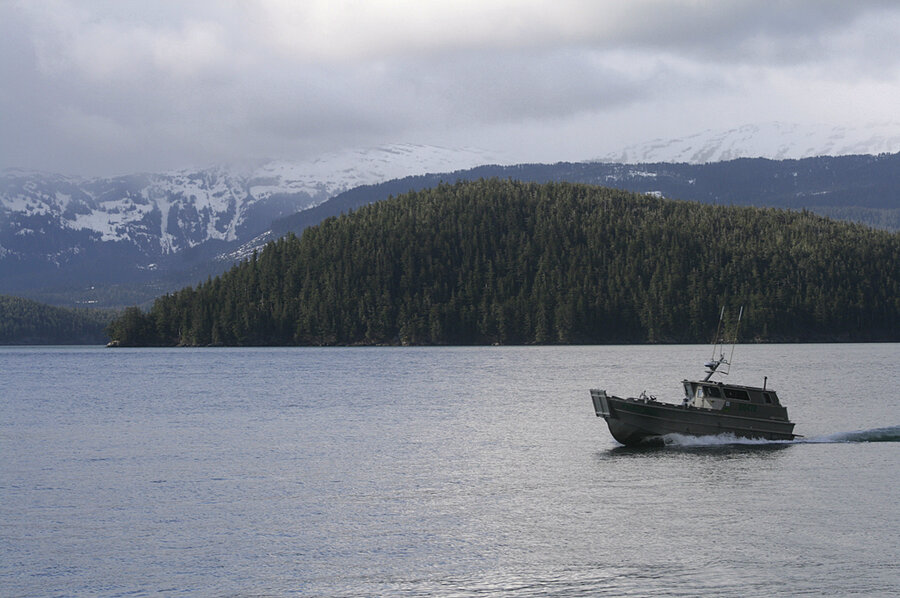Exxon Valdez cleanup holds lessons for Gulf oil spill
Loading...
| Anchorage, Alaska
Two decades after the Exxon Valdez supertanker ran aground and ripped open its cargo tanks, the spill still marks Alaska's environment. Pockets of fresh crude are buried in beaches scattered around Prince William Sound and segments outside it, in isolated spots along more than 1,200 miles of coastline that received oil in 1989.
The discovery confounded earlier predictions that remnant crude would quickly weather and disperse as waves washed it into the sea.
"At this rate, the remaining oil will take decades and possibly centuries to disappear entirely," concluded the Exxon Valdez Oil Spill Trustee Council, the federal-state panel that administers the $900 million civil settlement struck in 1991 between the governments and Exxon for natural resource damages.
IN PICTURES: Destructive Oil Spills
The lingering oil was a revelation to scientists like Gail Irvine of the United States Geological Survey (USGS), who found some still-fresh crude hundreds of miles away from Bligh Reef, along the Alaska Peninsula far outside Prince William Sound. "I was surprised," she says. "It was still goopy and aromatic. It was not asphalt."
The remnant oil represents a tiny fraction of the 11 million gallons that spilled – just 20,000 to 22,000 gallons, according to the National Oceanic and Atmospheric Administration. But it is a symptom as well as a symbol of a persistent oil spill disaster.
Creatures large and small still are struggling. One pod of killer whales lost nearly half its members, has failed to reproduce, and is likely to go extinct. Another pod lost about a third of its members and is still struggling. The big schools of Pacific herring that supported a rich commercial fishery are gone. Sea otter populations in heavily oiled areas are about half as big as would be expected.
While there have been far bigger spills, the Exxon Valdez disaster ranks, by far, as the most devastating in North America to marine life. The immediate toll included hundreds of thousands of seabirds and thousands of marine mammals. Commercial fisheries were closed, and traditional native American harvests of wild foods were halted.
A near-perfect storm of circumstances exacerbated the impacts: Heavy North Slope crude dumped near the shore; cold water; a semienclosed sound at the start of spring, when fish stocks and migratory wildlife were arriving.
Conditions made some cleanup efforts futile. Though 15,000 gallons of spilled Exxon crude were burned the day after the grounding, dispersants – like the chemical blends being deployed in the Gulf of Mexico today – didn't seem to work in colder water.
The shoreline's characteristics hinder cleanup and recovery as well. The rocky beach surfaces act as armor, preventing oil degradation, even in areas with strong wave action. The mousselike emulsified state of the oil also helped preserve the toxic freshness inside a filmlike coating, Ms. Irvine says.
The spill struck an ecosystem already in flux because of changing seasons, ocean cycles, and long-term climate warming in the far north, says Molly McCammon, a former executive director of the Exxon Valdez Oil Spill Trustee Council.
Unless there are oiled carcasses, much of the evidence is circumstantial. It's not certain that killer whales were lost to the spill, she says. "But they were seen swimming through oil, and they disappeared."
For many affected by the spill, the prolonged class action litigation was as stressful as the initial spill. In 2008, the US Supreme Court slashed the punitive penalty to 1/10th of the $5 billion that a federal jury had awarded in 1994.
The final Exxon Valdez cleanup workers may be the animals, like sea otters.
"As they forage in the intertidal [waters], they're probably slowly releasing oil from the sediments," says Brenda Ballachey, a USGS scientist who has focused on sea otters. "When you think of the thousands of pits that a sea otter digs, that starts to become a cleanup."
IN PICTURES: Destructive Oil Spills
Related:
Gulf of Mexico oil spill could be bigger than Exxon Valdez
Oil spill: What is the threat to Gulf of Mexico seafood?
Is the US ready for a 24-hour coastal oil spill response corps?


